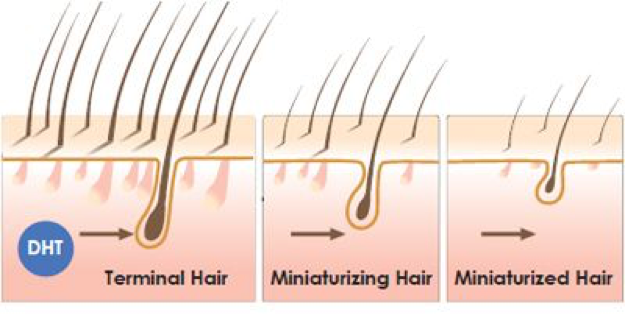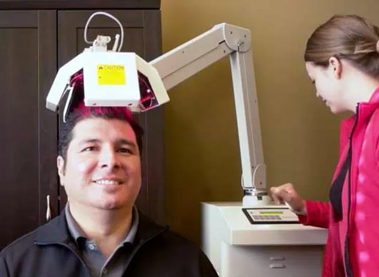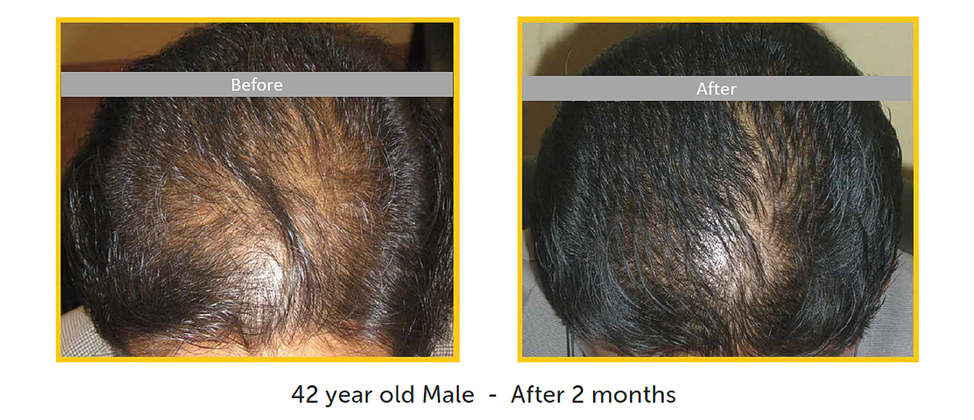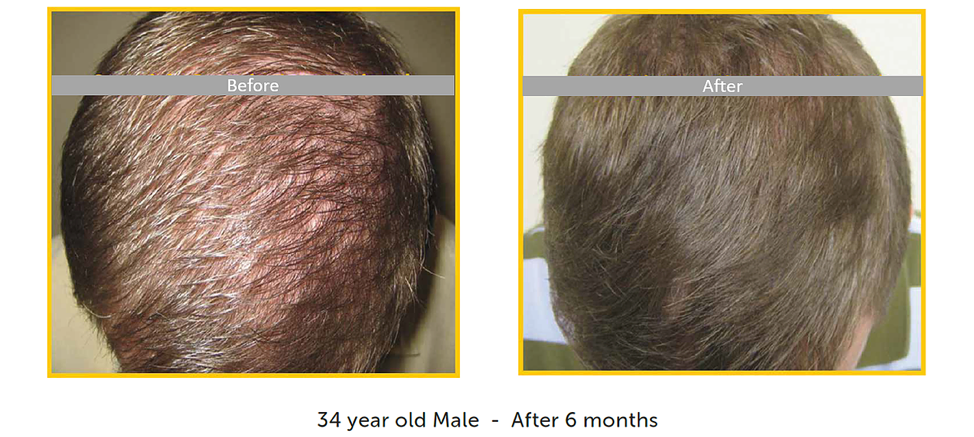What is Male Pattern Hair Loss?
Male pattern hair loss, also known as androgenetic hair loss is very common. Studies show that by age 35 about 65% of men have experienced some hair loss. By age 50 about 85% of men have significant hair loss. Male hair loss has been classified and graded by several systems.

While male hair loss is benign and considered a cosmetic disorder, it can cause problems for it’s victims. Not only does hair loss or “balding” add to the appearance of aging, it can also cause emotional, relational and professional problems for men. Fortunately, there are treatments, so keep reading.
What Causes Male Pattern Hair Loss?
Male pattern hair loss is also referred to as androgenetic hair loss. This is due to the importance of androgens or male hormones on the appearance of hair loss. Specifically, a hormone known as dihydro-testosterone or DHT is primarily for male pattern hair loss. DHT is produced from testosterone and in sensitive men causes a process called “follicular miniaturization” in hair follicles. Follicular miniaturization causes full-size hair follicles called terminal hair follicles to shrink. The full-size hair follicles produce large adult hairs.

When hair follicles shrink under the influence of DHT, they produce only small white hairs. These hairs can be so small as to be almost invisible. As time goes on, more and more follicles become miniaturized. This leads to increasing baldness. The hairs along the side and back of the head are less sensitive to DHT and tend to remain as full size (terminal) follicles. Non-surgical hair loss treatments are directed at stopping and/or reversing the progression of follicular miniaturization. Surgical hair loss treatment moves hair from the sides and back to the areas with balding.
Can Male Pattern Hair Loss be Prevented?
Unfortunately, the answer to “Can male pattern hair loss be prevented” is both yes with a “but” attached. A drug called finasteride or Propecia or Proscar can block the production of DHT (see above) from testosterone. This has been shown to stop further hair loss in most men, BUT ONLY when you take the finasteride from now on. If you stop taking it, the hair loss returns. Up to two-thirds of men will see an increase in scalp hair on finasteride, but again, only if you continue to take it. Finasteride also has some side effects that can include sexual problems that do not always resolve when the drug is stopped. Finasteride can also interfere with screening for prostate cancer. For these and other reasons, many men do not take finasteride for the long times required for good results.
What Options Do I have to Treat Male Pattern Hair Loss?
Men have several non-surgical options for hair loss. Minoxidil is available topically without a prescription in both a solution and a foam. The 5% form is preferable and the foam may have fewer side effects. Minoxidil may cause some scalp irritation and increased facial hair, but is usually well tolerated. Stopping the minoxidil will result in the loss of all new hair, so it must be used from now on.
Finasteride (Propecia or Proscar) blocks DHT being formed from testosterone. It can restore some hair in up to 65%, but it must be taken from now on to maintain the new hairs. Sexual dysfunction and trouble with prostate cancer screening are the most important side effects.
What Are the Options for Male Hair Loss When Topicals and Pills Don’t Work?
 Recent studies have shown the effectiveness of Low Level Laser Therapy (LLLT) for stopping and reversing hair loss. The AuraLux laser uses 650-nanometer laser diodes to completely cover the scalp with closely measured laser light. The laser increases blood flow and oxygen delivery to the scalp. The AuraLux System is more powerful and has a more effective focus on the diode emitters than previous systems. This means greater effectiveness of each procedure. Greater energy and focus also means you do not have to brush or comb your hair for the procedure. You can come in, have the procedure and go back to work or play without a mirror.
Recent studies have shown the effectiveness of Low Level Laser Therapy (LLLT) for stopping and reversing hair loss. The AuraLux laser uses 650-nanometer laser diodes to completely cover the scalp with closely measured laser light. The laser increases blood flow and oxygen delivery to the scalp. The AuraLux System is more powerful and has a more effective focus on the diode emitters than previous systems. This means greater effectiveness of each procedure. Greater energy and focus also means you do not have to brush or comb your hair for the procedure. You can come in, have the procedure and go back to work or play without a mirror.
What Results Can I Expect?
Hair loss stops in 98% of men and women. Hair increases by 20% in 97% of patients. Hair increases by 30% in 89% of patients. Perhaps most impressively, 57% of men and women see a 50% or greater increase in hair. Each laser treatment session lasts 20 minutes. Patients receive 20 sessions, twice a week for 2 months then once a week for a month. Once a month maintenance treatment is recommended following a full course of treatments.


You should see results in about 3 months. In about 6 months you should see the extent of your improvement. The laser represents an excellent alternative to many men who want to avoid hair transplant surgery. Similar home devices generate much less energy and do not have the research-based results of the AuraLux.
What Works for Hair Loss When All Else Fails?
Hair transplant is the treatment that can work when nothing else has been effective. Hair transplant for men has been available for several decades. However, modern techniques using Follicle Unit Extraction (FUE) give a more natural appearance of normal hair patterns. This results in higher patient satisfaction than older techniques. Older techniques removed strips of hair that left scars on the scalp. FUE removes 1-5 hairs as a single “plug” that is then transplanted into the area of need. This allows very specific and natural placement of the hairs. The procedure typically takes 4-6 hours (depending on the number of plugs) and is done in a single day. Afterward, the area the plugs are taken will feel like a sunburn for a few days. There may be some crusting in the area of the plugs for a week or so. You need to avoid putting your head underwater for 2 weeks including avoiding direct shower on your scalp. Strenuous exercise should also be avoided for 2 weeks. Although you will see some immediate results, final results will not be seen for 9-12 months.
Why use Innovations Medical and the Auragraft System for My Hair Transplant?
AuraGraft is a new tool that minimizes the risk of infection and contamination by using completely disposable tools. The handpiece used for extracting the hairs was developed specifically for FUE. Previous handpieces were converted from dental equipment. These generated a large amount of heat which can damage the plug. The AuraGraft specially designed handpiece provides better quality plugs. FUE hair transplant techniques using AuraGraft have a greater than 99% survival rate for the transplanted hairs. Hair restoration and hair transplant procedures are performed at both our Dallas and Fort Worth practice locations.
Schedule a Consultation